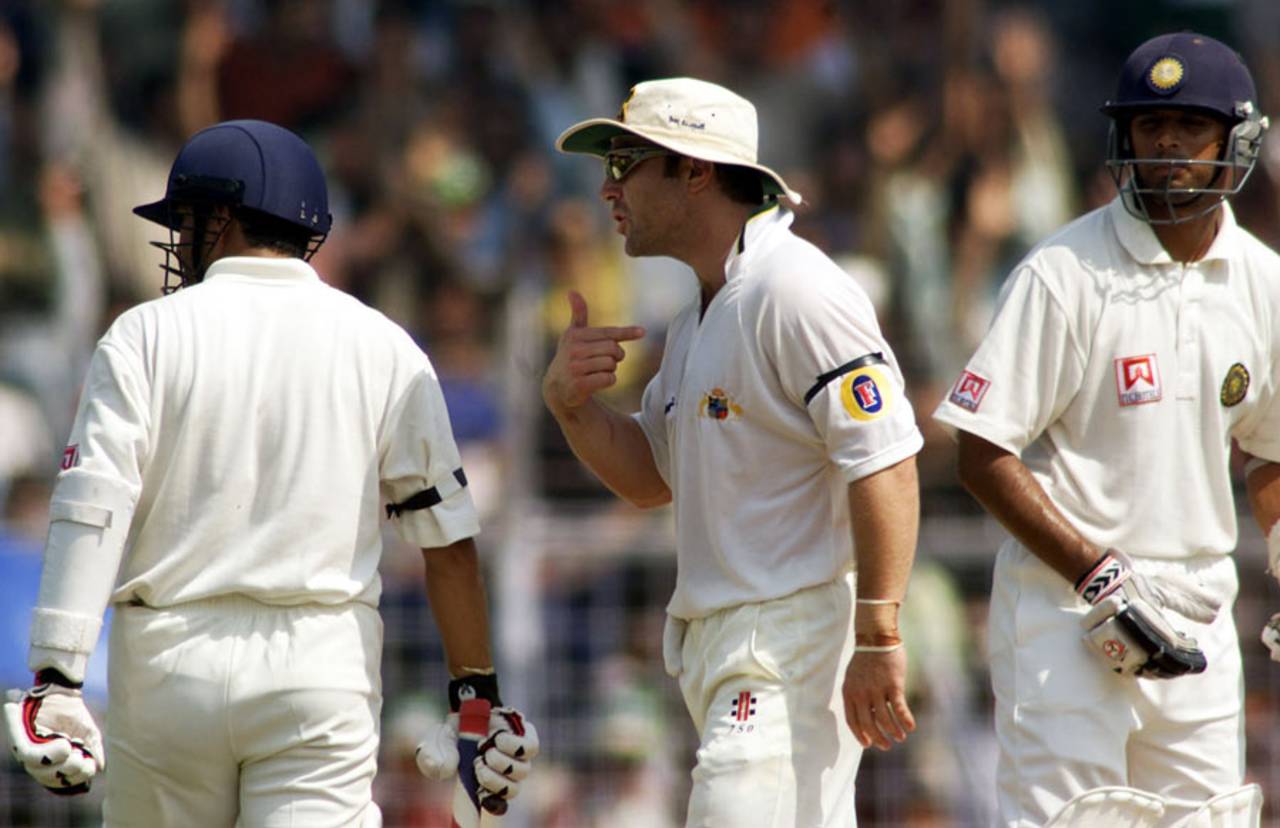India and Australia have produced some fabulous contests over the last decade bookended by whitewashes on either side of the glory era.
Kolkata '01 is often invoked as the defining moment of the rivalry. How could anyone dispute that? But to consider that as the starting point of the rivalry would be decidedly unfair.
Steve Waugh's all conquering team visited India on the back of a 15-0 score line, with a promise to make it 18-0. The
first Test in Mumbai was finished in three days and Australia won by 10 wickets. Going by the scorecard alone, it's a mauling. But it was the kind of match that reinforces the Cardusian axiom: The scoreboard is an ass.
Sachin Tendulkar produced one of the most glorious seventies the game has seen - with five pristine straight drives - against Glenn McGrath, Jason Gillespie and Shane Warne at their peak. After failing to put up a big score in the first innings, India got Australia in trouble at 99 for 5, before Adam Gilchrist came out and rewrote the job description of a wicketkeeper in the game forever. Has any other cricketer ever had such a huge impact on their respective discipline?
But my favorite part of the Test, in fact one of the most absorbing sessions of cricket I have seen, came in India's second innings when Tendulkar joined Rahul Dravid in the middle. Trailing by 173 and at 58 for 2, a circumspect Tendulkar joined Dravid at his most sedate. If the match situation was intense, the bowling accentuated it further. Nearly a session went without a loose ball from Warne, McGrath, Gillespie and Damian Fleming.
At one stage, Dravid was on 11 off 79 balls. He was sweating by the bucket and letting the ball go by the dozens. While Tendulkar at the other end was less flamboyant than usual, he rarely missed out on scoring opportunities. This wasn't merely two batsmen with contrasting styles batting with each other as much as two religions putting on a simultaneous road show. The stubbornly obdurate 'Dravidology' at one end, and the obdurate yet efficient 'Sachinism' at the other, combining together for a common cause.
Dravid, in the middle of his leaving, blocking, and swaying zen mode was baited in by a full and wide delivery by McGrath. Cricinfo's ball-by-ball commentary describes it thus: "65.1 McGrath to Dravid, FOUR, outside the off stump, reaches for that ball and drives it through point, runs coming thick and fast after lunch". What the commentary missed out was that Dravid admonished himself after playing a fairly fluent drive because he was mentally conditioned to not chase anything wide. Does a batsman reach a peak zone of concentration where he sees even fluent runs from ways in which he's not conditioned to play as a risk? Well, who knows? Maybe, only Dravid can answer. But sticking true to the principles of the religion he founded, he let that question go unharmed when my friend Subash had posed it to him in his podcast.
If there was any flaw in Tendulkar's 76 in the first innings, it's that he didn't score a single boundary off McGrath. As if to settle scores, Tendulkar started off with two crispy off drives against McGrath in the second innings. Was it a conscious choice to take on their strike bowler to upset his rhythm, despite being circumspect against the other bowlers? Steve Waugh didn't let us find out by taking McGrath out of the attack immediately.
Against a bowling attack intent on soaking up pressure, Tendulkar found the release valve at every hint possible. His primal objective of run scoring is merely tweaked according to situations rather than being altogether abandoned. But sometimes even his finely crafted tweaks aren't good enough against freakish accidents. Mark Waugh bowls a marginally short one which Tendulkar rocks back all the way and pulls it along the ground for four. Waugh follows with an even shorter one and Tendulkar replicates the same stroke, but this time the ball ricochets off Justin Langer at short leg and pops up for Ponting to complete a stunning catch.
Outside of the sum total of their skills with the bat and ball, what defined this Australian team at their peak was their ability to create chances in clutch moments where they marginally existed. There may have been more acrobatic and athletic catches than Ponting's, but for his preternatural sense of anticipation clubbed with the supreme execution, this ought to be rated among the greatest catches of all time.
If ever a Test that was grossly one-sided and ended in three days can be called a classic, this was it.
